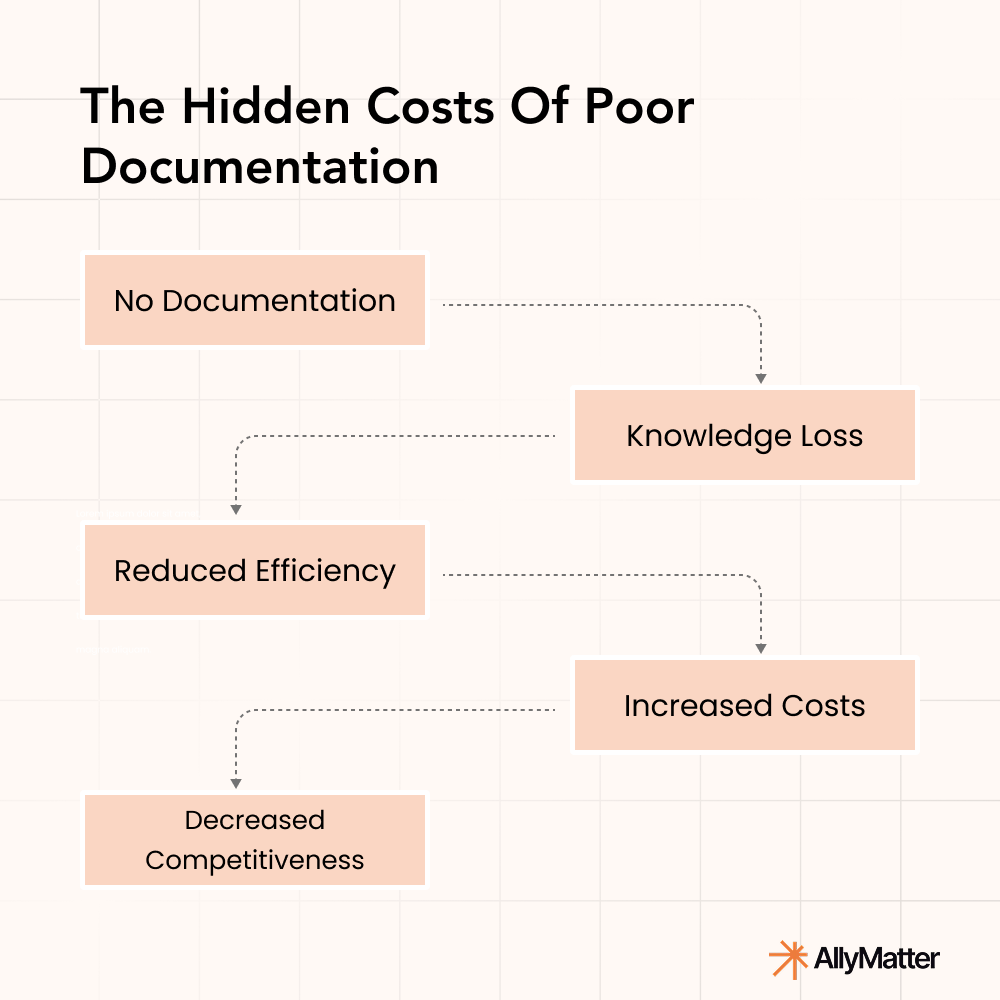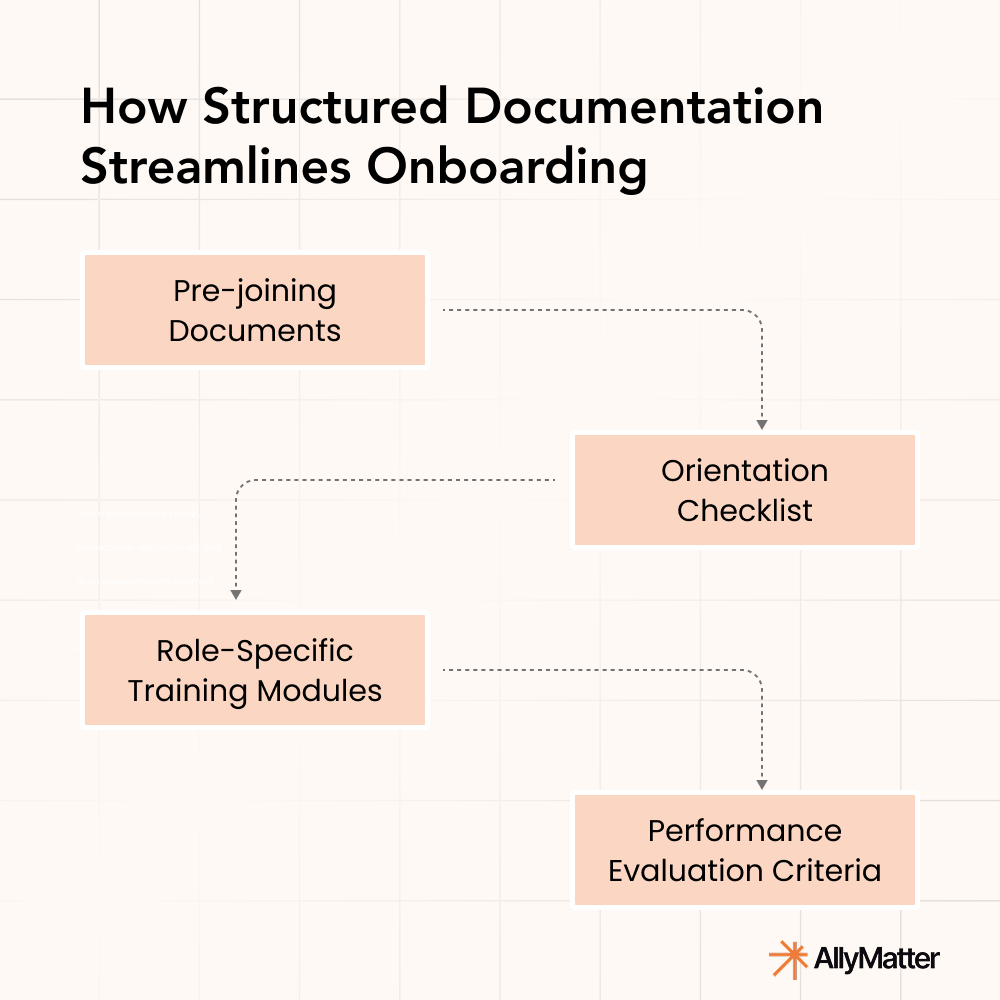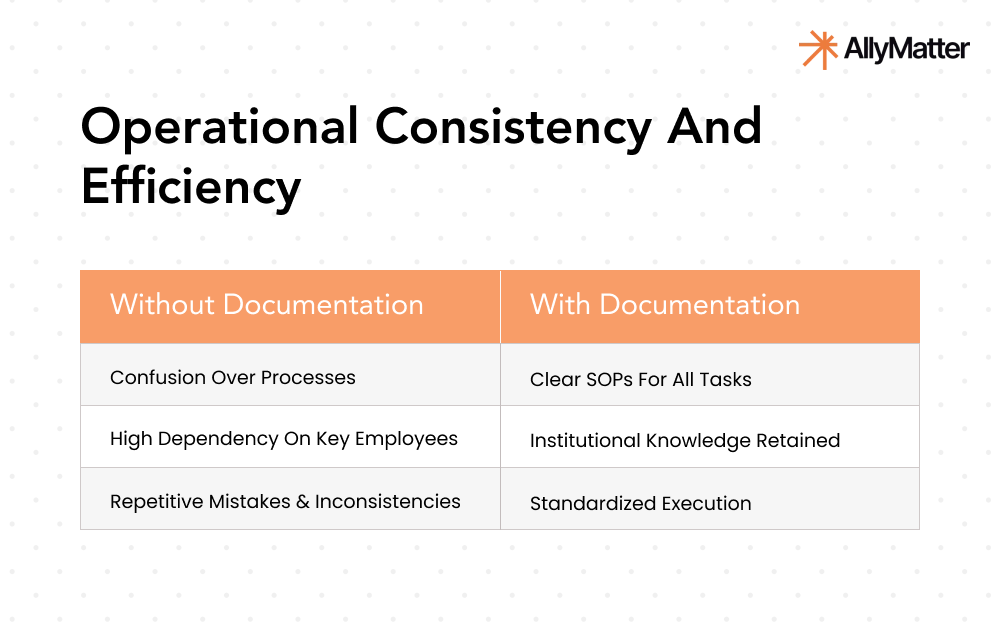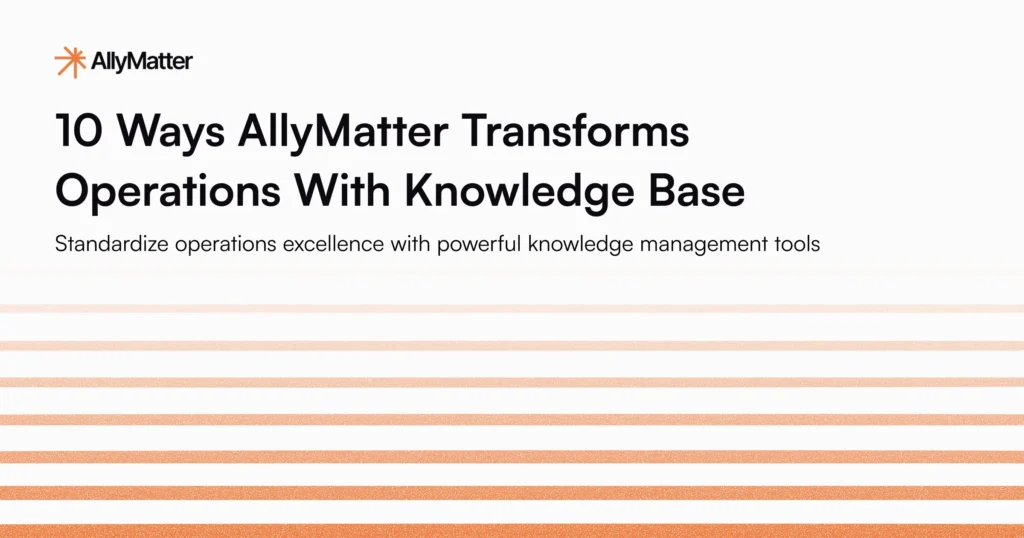Here’s Why Every Business Needs a Knowledge Base
Organizations today are constantly seeking ways to optimize operations, improve efficiency, and maintain competitive advantage. Yet, amidst the pursuit of cutting-edge technologies and innovative strategies, one fundamental element often gets overlooked: comprehensive documentation.
According to a Gartner survey, 47% of digital workers struggle to find the information needed to effectively perform their jobs. Even more concerning, McKinsey Global Institute reports that the average interaction worker spends an estimated 20 percent of their workweek looking for internal information or tracking down colleagues who can help with specific tasks. These numbers highlight a pressing issue: without comprehensive documentation, businesses bleed time and productivity.
For Chief Human Resources Officers (CHROs) and Chief Operations Officers (COOs), addressing this challenge isn’t just about improving efficiency—it’s about unlocking your organization’s full potential. Here’s why.
The Hidden Costs of Poor Documentation
When documentation is inadequate, fragmented, or outdated, the consequences ripple throughout the organization. New employees struggle to get up to speed, seasoned staff waste time searching for information, and critical knowledge walks out the door when employees leave.
Consider this scenario: A manufacturing company loses a senior engineer who’s been with the organization for 15 years. Despite their invaluable expertise, much of their knowledge was never properly documented. The result? Production delays, quality issues, and a lengthy, expensive training period for their replacement. What could have been a smooth transition instead becomes a significant operational disruption.

This scenario plays out daily across industries, creating invisible drains on productivity and morale. But comprehensive documentation offers a solution that benefits both operations and human resources departments alike.
The CHRO Perspective: Documentation as a People Strategy
For CHROs, comprehensive documentation goes far beyond simple record-keeping—it’s a strategic asset that directly impacts workforce effectiveness and satisfaction.
Employee Onboarding and Training
New hires need structure and clarity. Well-documented onboarding processes ensure a seamless transition, reducing the time it takes for employees to become productive. A centralized knowledge repository allows HR teams to:
- Standardize training programs
- Reduce repetitive questions
- Provide easy access to policies, role expectations, and performance guidelines
Process chart: How Structured Documentation Streamlines Onboarding

For instance, a growing tech company struggling with inconsistent onboarding created a digital repository of HR policies, training materials, and SOPs. The result? A significant reduction in onboarding time and increased employee confidence from day one.
Compliance and Risk Mitigation
HR compliance is a high-stakes responsibility. Without proper documentation, organizations expose themselves to legal risks, penalties, and reputational damage. From employee handbooks to training certifications, CHROs rely on comprehensive documentation to ensure:
- Alignment with labor laws and industry regulations
- Consistency in handling workplace disputes and grievances
- Proper record-keeping for audits and legal protection
When documentation is lacking, organizations expose themselves to significant legal and financial risks. Conversely, thorough documentation provides protection during audits or legal challenges, potentially saving millions in fines or settlements.
Knowledge Retention and Workforce Continuity
When experienced employees leave, they take valuable institutional knowledge with them. Documenting critical HR processes creates a knowledge base that transcends individual employees, ensuring business continuity despite personnel changes.
- Documentation prevents the loss of critical expertise and best practices
- Clear documentation reduces confusion and errors during employee transitions
- Properly documented processes minimize disruption when key team members depart
Sarah, an experienced HR director at a growing tech company, noticed that departing employees consistently took critical procedural knowledge with them. When their benefits coordinator left suddenly, the replacement spent weeks struggling to understand enrollment deadlines, vendor contacts, and approval workflows that existed only in their predecessor’s memory. This scenario plays out across organizations daily, highlighting why systematic knowledge capture matters more than individual expertise.
Conflict Resolution and Performance Management
Clear documentation eliminates ambiguity in employee expectations and performance evaluations. By standardizing HR policies, organizations can:
- Foster fair and transparent performance reviews
- Reduce disputes over job roles and responsibilities
- Create an equitable work environment
This consistency empowers managers to provide objective feedback based on established criteria. Additionally, well-documented performance standards help employees understand exactly what success looks like in their roles.
The COO Perspective: Documentation as an Operational Imperative
For COOs focused on optimizing performance and ensuring operational excellence, comprehensive documentation provides the foundation for efficiency, consistency, and scalability.
Operational Consistency and Efficiency
Without proper documentation, processes tend to drift over time and vary between teams or locations. This inconsistency leads to quality issues, customer dissatisfaction, and inefficiency. Comprehensive documentation establishes clear standards and procedures, ensuring consistency across the organization regardless of who’s performing the task or where it’s being done. It enables organizations to:
- Establish repeatable, scalable processes
- Reduce dependency on specific employees
- Minimize disruptions caused by personnel changes

For example, a restaurant chain discovered this when they noticed significant quality variations between locations. Investigation revealed that each restaurant had developed slightly different procedures for food preparation. By documenting standardized processes and ensuring adherence across all locations, they not only improved quality but also reduced waste and training costs.
Risk Management and Disaster Recovery
When a crisis strikes, clear documentation becomes invaluable. Whether facing a natural disaster, cybersecurity breach, or unexpected leadership change, organizations with well-documented contingency plans can respond quickly and effectively. Documentation plays a critical role in mitigating risks by:
- Establishing contingency plans
- Creating a structured disaster recovery strategy
- Ensuring a smooth transition during leadership changes
Imagine a financial services firm with their primary data center experiencing a prolonged power outage. Because steps for failover are clearly documented and regularly tested, they can maintain operations with minimal disruption while competitors struggle for days to restore service.
Removing Silos and Enhancing Cross-Department Collaboration
When departments operate in silos, inefficiencies arise. A centralized knowledge management system promotes better communication and synergy between HR, operations, finance, and other teams. By documenting and sharing best practices across departments, organizations foster:
- Streamlined decision-making
- Faster problem resolution
- Greater alignment of company goals
For example, a global financial services firm implemented an internal knowledge-sharing system, which reduced redundant work and improved collaboration between HR and operations, saving thousands of work hours annually.
Scalability and Growth
As businesses expand, they must scale operations effectively. Standardized documentation allows organizations to:
- Replicate successful processes in new locations
- Train new employees efficiently
- Ensure quality control and adherence to best practices
A SaaS company, for instance, used structured documentation to standardize its customer support processes, which allowed it to scale its team from 50 to 200 employees without a dip in service quality.
Shared Priorities for CHROs and COOs
Compliance and Legal Protection
Both HR and operations leaders depend on documentation to ensure regulatory compliance and avoid legal complications. Whether it’s HR policies or operational safety protocols, clear documentation provides a safety net for organizations.
Enhancing Employee Productivity
When employees have easy access to well-documented processes and policies, they spend less time searching for information and more time executing tasks. This improves productivity and job satisfaction.
Change Management
Organizations constantly evolve—whether through digital transformation, mergers, or internal restructuring. Well-maintained documentation ensures smooth transitions and minimizes disruptions during periods of change.
Cost Efficiency
Time is money, and inefficiencies cost businesses millions annually. By reducing redundant efforts, optimizing resource allocation, and preventing costly errors, comprehensive documentation directly impacts the bottom line.
AllyMatter: Building your Strategic Knowledge Base
Creating a comprehensive knowledge base requires the right foundation. AllyMatter’s enterprise knowledge management platform centralizes documentation across departments while maintaining the security and access controls that executive leaders require.
The platform’s automated approval workflows ensure that critical policies move through proper channels without bottlenecks. Granular access control means that sensitive HR documents, operational procedures, and strategic plans reach the right people at the right time. Built-in audit trails provide the accountability that CHROs need for compliance and the transparency that COOs require for operational oversight.
With intelligent organization through smart tags and metadata search, teams find information quickly rather than recreating existing work. The result is a knowledge ecosystem that grows with your organization while preserving institutional wisdom.
Documentation as a Strategic Investment
Comprehensive documentation isn’t merely a compliance or administrative task—it’s a strategic investment that yields returns across multiple dimensions of organizational performance. For CHROs and COOs alike, prioritizing documentation delivers tangible benefits to the workforce, operations, and ultimately, the bottom line.
Organizations that fail to prioritize documentation risk falling into the trap of inefficiency, non-compliance, and operational silos. On the other hand, those that invest in structured knowledge management create a workplace that is productive, scalable, and future-ready.
The question isn’t whether you need documentation—it’s whether your organization can afford to operate without it.
Ready to transform your organization’s knowledge management? Join our waitlist to be among the first to experience AllyMatter’s enterprise platform designed specifically for growing companies.
Frequently asked questions
What’s the difference between documentation and a knowledge base?
Documentation typically exists as scattered files across various platforms. A knowledge base organizes information into a searchable, interconnected system where employees can find related content and trace decision-making processes. Think of documentation as individual puzzle pieces, while a knowledge base shows the complete picture.
How long does it take to implement an enterprise knowledge base?
Implementation typically occurs in phases over 3-6 months. Initial setup and core content migration happen first, followed by department-specific training and gradual content expansion. The key is starting with high-impact use cases rather than trying to migrate everything at once.
What types of content should be prioritized in a knowledge base?
Focus on information that gets requested frequently or causes delays when missing. This includes standard operating procedures, compliance policies, onboarding materials, vendor contacts, and decision-making frameworks. Emergency procedures and regulatory requirements should also be prioritized for risk management.
How do you measure knowledge base ROI for executives?
Track metrics like time-to-information, reduced duplicate requests, faster onboarding completion, and decreased escalation rates. Many organizations see measurable improvements in employee productivity within the first quarter and significant compliance risk reduction within six months.
